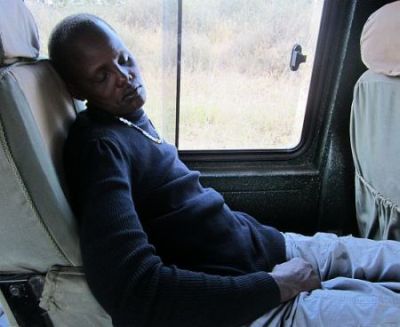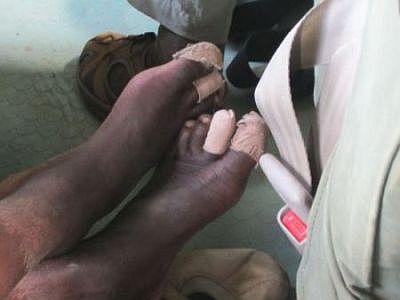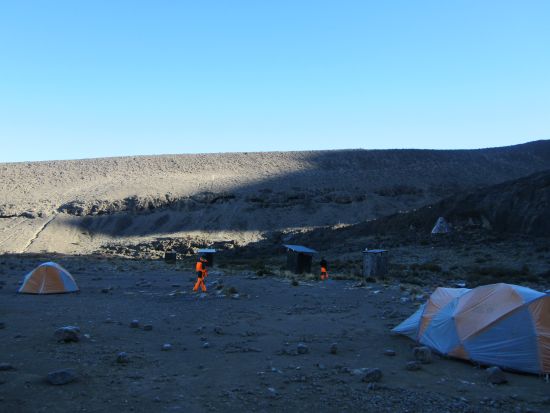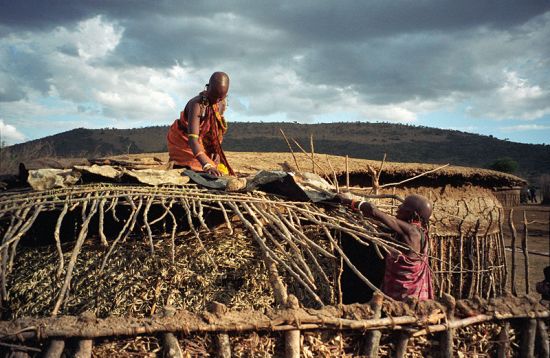
I went, I saw, I climbed, I did not conquer.
Actually, I didn’t intend to conquer anything — it’s always annoyed the hoo out of me to hear mountains referred to as being conquered. As far I (and some mountaineers I’ve talked with over the years) am concerned, the mountain lets you climb it. If it doesn’t, you go home, preferably not on a stretcher.
What conceivably could be conquered is altitude sickness, but one needs to have several weapons at hand which I did not, primarily more time to acclimatize. While our eight days is longer than some treks, it wasn’t enough for me.
I did four days, or half the trek, and stopped at 13,665 feet (4,165 meters). Palpitations. Shortness of breath, otherwise known as panting. Even when I didn’t have those, on Day 2 (“the Day from Hell”) I felt as if I were walking in knee-high water against a powerful current. That was when the trail was flat. On any upward incline — and especially any rocks to climb over, of which there were far too many that day — I had the strength and capability of a garden slug. It wasn’t anything like normal tiredness, with which I am deeply familiar. It was like having faded away till I became my shadow, wafting gently near the bulk of my body.
Finally a voice came to me that said, “If you ever want to see home and hearth and family and the gas bill and that cranky lady in the housewares store again, turn around now.”
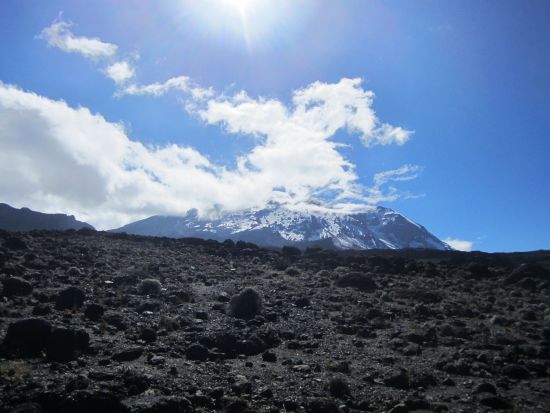
Seeing that the only 100 percent guaranteed remedy for this condition is to descend (many sources add “immediately,” which I didn’t do), down I went, along with my friend and colleague, veteran photographer Karen Kasmauski, who was also feeling the effects.
I don’t know how the other people in our small group avoided or overcame this condition. I know that they all made it to the summit except for one girl, who stopped with an hour yet to climb because of intense diarrhea. Another side effect, if you want to know. And that was after they’d been climbing for ten hours. Ten (10) hours.
Two other members who made it to the summit had to have oxygen and were basically carried down by their porters for a while. One of these trekkers, a young woman with more competitiveness than sense, saw that her friend was going to reach the top before her, and consequently started to run in order to pass her and get there first.
You cannot run at 19,000 feet. On the master list of crazy, potentially life-threatening things to do, this ranks up there with poking at a family of blue-ringed octopi. I don’t know how she managed to keep going, but the result was that not only did she need oxygen, she doesn’t remember anything of what happened after that for a while.
True, she can now say she climbed Kilimanjaro. (Of course, I also can say she climbed Kilimanjaro.) I’m still trying to figure out how I feel about not be able to say I climbed it. But let’s move on — the world is full of all sorts of mountains.
For example, education. After the trek, we spent a day visiting two schools which were benefiting from our group. At the first, an elementary school more than an hour outside Arusha, we delivered cartons of schoolbooks. Schoolbooks, I’ve concluded, bear a strong resemblance to oxygen tanks for any child who wants to climb up in life. It’s not that your village child must become prime minister, but without books it’s no more likely to happen than that I would reach the top of Kilimanjaro on roller skates.
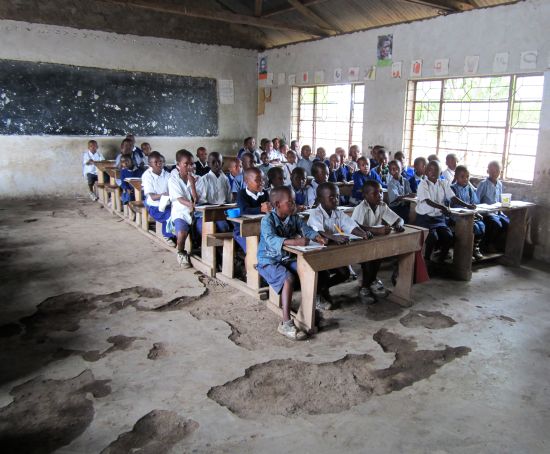
At the second, Mwedo Girls Secondary School, which is exclusively for Maasai girls, our group is sponsoring two daughters of one of our group members, Theresia Ismaili Majuka. We got a tour of the school, and saw Theresia’s joyful reunion with her girls after four months. Theresia lives on Zanzibar, where she makes and sells handicrafts to tourists on the beach. She doesn’t let the girls come back to her village on breaks or vacations, because of the high probability that some family members (male) will contrive to marry them off and that will be the end of that. It happened to her.
I believe that Theresia is the first Maasai woman (perhaps first Maasai, period) to climb Oldonyo Oibor, the “White Mountain.” She did it to promote the message of our group, which is “Everybody has a right to education.”
I admire her for seeing it through, but not as much as I admire her dedication to her daughters’ future. The size of that makes any mere mountain look pretty puny.
